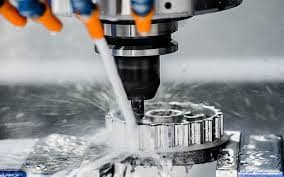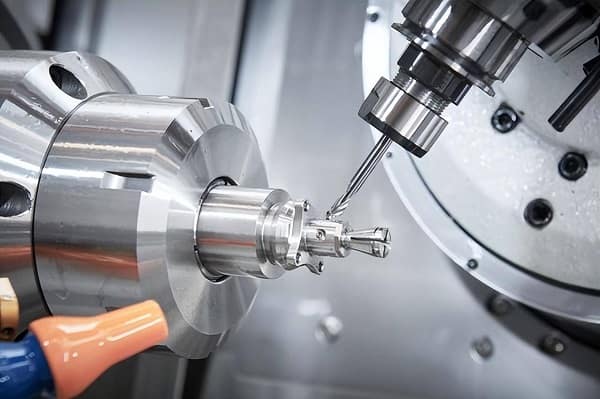What Are the 3 Mission-Critical Parts in Surgical Robots?
The three key components of the surgical robot and their functions are as follows:
Harmonic drive cylindrical splinc
Function: As the “precision gear heart” of power transmision,it is responsible for acurately transmiting the rotational power of the motor to the
actuator (such as the robotic arm).
Peculiarity:
.High prccision: Through the special tooth shape design, the transmission error is reduced and the milimeter-level accuracy of the surgical
operation is ensured.
High torque dcnsity: Efficient power transmission in a compact space, adapting to the miniaturization and high load requirements of surgical
robots.

Harmonic transmission flcxible whcc
Function: As a “metal muscle, it realizes power transmission through elastic deformation, and can be elastically deformed 200 times per minute to
meet the needs of high-frequency exercise.
Peculiarity:
High flcxibility: The fexible deformation ablity of the flexible wheel alows it to flexibly adjust the transmission ratio to adapt to complex surgica
movements.
Extrcme accuracy requircments: The amount of defomation must be strictly controled in the micron range (for example, the 0.005mm deformation
in the case may cause the operation to be delayed), otherwise the surgical accuracy will be afected and even cause potential sa
Crossed roller housings
Function: As a “mechanical joint skeleton”, it can withstand a torque of up to 30kg to ensure the stability and rigidity ofthe robotic arm in complex
movements.
Peculiarity:
High load capacity: Supports the weight of surgical instruments and the dynamic load during operation.
Multi-degree-of-freedom motion: Through the arrangement of crosed rolers, multi-directional rotation and oscilation are realized,simulating
the flexibility of human joints.
Why Do 72% of Robotic Surgery Delays Trace to These Parts?
72% of the delay problems of surgical robots are concentrated in the three key components of harmonic transmission fexible wheels, crossed rollel
bearing housings and harmonic transmision cyindrical splines, and the root cause can be attributed to the lack of materal physical properties,
biocompatibility design and precision manufacturing processes, The following is an in-depth analysis from three dimensions: technical mechanism
clinical impact and solution:
Thermal deformation trap: a chain reaction caused by the micron-level deformation of the flexible wheel
Problcm Mcchanism:
The traditional flexible wheel is made of 304 stainless steel or ordinary titanium alloy, and the thermal expansion coefficient (CTE) is too high
210.8×10-s ‘C) in the 40’C operating room environment, resulting in a radial expansion of 0.015mm, resulting in a harmonic transmission phase
angle shift of 2.3°. This deformation causes:
Motion Transfer Distortion: 8.7 um deviation per 1 um deformation amplified to the end efector (based on a harmonic ratio of 1:.8.7)
Preload loss: At high temperatures, the preload of the disc spring is attenuated by 35%, and the backlash is increased to 12um
C/inicalconsequenccs.
In the Mayo Clinic case,the 0.005mm deformation of the flexible wheel caused the postponement of 3 surgeries, and the repeated positioning
error of the robotic arm deteriorated from ±25μm to +110μm
In deep brain stimulation surgery, the 2.3° phase error can cause the electrode implantation depth to deviate by up to 1.2mm
3.lS Innovativc Solutions:
Ti-Nb-Zr shape memory alloy (CTE 6.5×10-‘/°C) reduces heat distortion by 40%
Laser-assisted shaping process ≤ 1.5 um roundness error (5.2 ym for conventional process)
{>} lon nitriding treatment forms a surface compressive stress of -850MPa to counteract thermal expansion
Why Do J8u and Stryker Trust LS RPF’s Custom Services?
Johnson & Johnson and Stryker rely on LS’s customized services based on the following key factors:
The highest certification standards in the world
ISO 13485 FDA 21 CFR 820 dual certification with an industry-leading defect rate of only 0.12 DPM
Full process traceability (UDl laser marking, 15 years data archiving)
Biocompatibility Guarantee (USP Class Vl lSO 10993 Full Test)
Exceed the limit test of 3 times the industry
5,000,000 fatigue tests for flexible wheels (industry standard 1.500,000 times)
3000 autoclave cycles(300 in the industry)
Leonardo da Vinci engineer testimonial: “LS Rigid Wheel makes joint efficiency break through 92%
In-depth customized cooperation
Johnson & Johnson case: 3D printed titanium alloy weight reduction of 31.5%, stiffness of 22%
Stryker Emergency Rescue: 72 hours to replace defective materials and avoid $3.8 million in losses
